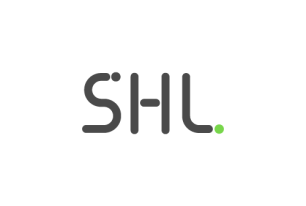Why Measuring Job Competencies is Critical for Employee Retention
Employees are leaving their organizations in record numbers. Discover why measuring job competencies is key in retaining critical talent.
Share
Organizations globally are grappling with the challenge of both finding new talent and retaining existing employees. We are all familiar now with ‘The Great Resignation’, more recently termed ‘The Great Reassessment’, with up to 4.5 million Americans quitting their jobs every month and similar numbers of resignations challenging organizations in Europe and Asia too. In a Global Talent Trends Report for 2022 released by LinkedIn, they revealed that 41% of the global workforce have said that they are likely to consider leaving their jobs within the next 12 months—if they have not already.
Employee retention is more critical than ever. Organizations need to find more effective ways to ensure that employees stay with the organization and are engaged and productive. This is where job competencies play an important role. Job competencies are commonly understood as sets of behaviors, values, motivators, skills, and abilities that define the requirements to perform in a role or organization successfully.
One way to ensure that employees are engaged, perform, and ultimately remain with the company is to establish that they fit well into the competencies required by the role they are in and that they have a clear development and career path for their future in the organization based on their natural strengths and competency potential.
How can measuring competencies help in retaining your employees?
1. Focused, individualized development
Employees often rank the opportunity to learn and develop in their roles as among the top drivers of both attraction and retention. To engage and retain people, particularly your ambitious high potentials and top talent, employees want to know about and have a clear plan for their individual development path.
Never block individual development—by enabling employees to keep growing and learning, one wins loyalty and increased retention. Also, do not just focus development on your top talent or senior-level employees. Not everyone needs a promotion to feel like they are developing and growing in their careers, but every single employee does need to have a growth path of some kind.
Employees need to also know what to grow! Common mistake organizations make is starting development programs that are very generic and not focused on each individual; or starting programs without a clear view of where the competency gaps are and how their employees' bench is against what is out there in the market. Development becomes so much easier if an organization and each individual have an objective view of their weaknesses and strengths that can be leveraged, by incorporating a job competency measurement to include behavior, motivation, and natural ability.
With a clear picture of how each employee fits to the key competencies of both their current role and future roles, the organization is then able to identify and fill gaps with focused competency development initiatives, mentoring, coaching, and job rotation or exposure opportunities.
2. Individualized career paths
Career paths have become increasingly fragmented and unclear for both organizations and employees in recent years, despite their relation to employee retention. Employees want more flexibility, transparency, and control over their careers and want to be able to see and understand what the next opportunities are for them in the organization. Without a view of where they could go in their career with a company, employees are likely to plateau in their current role and start looking for new opportunities, often outside of their organization.
Understanding employee fit with key job competencies is also a great opportunity for an organization to tap into the aspirations of its people and use their aspirations and strengths for the good of the company. It further allows the organization to uncover hidden potential by getting a view of what latent talent is available in the business already and how this can match business priorities.
LinkedIn research has found that where organizations have a high level of internal mobility opportunities, employees stay at these companies twice as long. Without a clear vision of what your employees’ aspirations and competencies are, which has been made increasingly more difficult to visualize with remote working, organizations are unable to adequately engage with each employee to plan out potential vertical or lateral career paths for them based on their individual needs and the organization’s needs.
To engage and retain people, particularly your ambitious high potentials and top talent, employees want to know about and have a clear plan for their individual development path.
3. Role performance and engagement
Fitting people into the right role in the organization is critical for employees to ultimately perform in their jobs. Many organizations are fairly good at matching people to role competencies when recruiting new employees, but often do not have a good and objective view of what their current employees look like in terms of competency fit on either an individual or group level.
Poor alignment and fit to the role typically lead to lower overall engagement, motivation, and commitment. The employees are likely to underperform and eventually move on to greener pastures where they fit the requirements better. Job competencies help employees in the role understand what ‘good’ or even ‘great’ looks like and provide clear standards of excellence of what they need to achieve and perform. Having this clarity can lead to increased job satisfaction and motivation. Employees are likely to do much better in their jobs, be more engaged and happier, and far likelier to stay with the organization for longer.
Tips for using job competencies to retain talent
- Competency frameworks used to define roles should be rooted in psychological theory and research and developed to a rigorous and comprehensive standard. They need to be future-focused and relevant to your organization.
- Ensure that your organization uses valid and objective ways to measure employees against the job competencies.
- Implement flexible and innovative technology to quickly visualize competency fit across your organization enabling you to respond proactively to the talent retention challenge.
- Act on the insights gained through focused individual and group competency development initiatives and career path planning.
- Use approaches to understand competency fit throughout the talent lifecycle from hiring and onboarding to development, performance management, and succession planning.
- Communicate with employees! Employees increasingly wish to own their development and careers and a lack of transparency and communication on plans and initiatives will lead to lower engagement and unwanted turnover.
Not all employee turnover is bad for the business of course and not every employee who leaves your organization is unsatisfied with their development and career path. However, high turnover is costly, time-consuming, and detrimental to employee morale. By effectively adopting some of the above strategies and tips to ensure a fit of employees to the job competencies of today and tomorrow’s job, organizations are likely to see an improved employee retention rate.
SHL’s Talent Management solution, Mobilize, delivers organization-wide actionable people analytics—helping you understand if your employees fit with the job competencies required for now and in the future.
Book a demo with us today and let us help you retain critical talent in your organization!









